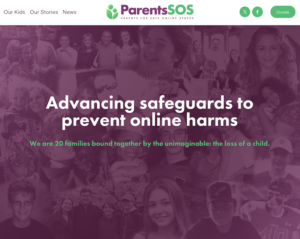Please click on highlighted word in sentence to link to supporting research. Additional research, and research references can be found on Zone’in Fact Sheet.
Mounting research indicates technology is harming our children, yet adults continue to adamantly support unrestricted use (Huffington Post, 2014). Handheld devices have significantly increased infant, toddler, and child access and immersion into a virtual world devoid of critical factors for development, behaviour, and learning. Prolonged and unsupervised exposure by young children to violent and fast paced imagery is resulting in significant changes in brain wiring and chemistry. Teachers and parents struggle to manage child behaviours as tantrums, aggression, detachment, and defiance have become the norm. Sedentary, neglected, overstimulated, and isolated, the future of the new millennium child is now in question. Act now to save what could become The Last Generation of children by signing this petition for government intervention to ban handheld devices for children under the age of 12 years, citing 20 research evidenced reasons (10 listed below, and 10 listed in previously published document).
- Disconnected parents cause rise in child mental illness
A frequent scene in today’s culture is adults attached to devices and detached from their children (Radesky 2014). These often neglected children display a variety of problematic behaviors, which are increasingly diagnosed as mental illness, with the really unfortunate children placed on dangerous and unproven psychotropic medications. Sad, mad, and bad, detached children form unhealthy attachments with the ‘constant’ in their lives…technology, which they are overusing 4-6 times expert recommended guidelines (AAP 2013). Technology use by children is driven by parents, and overuse is readily enforced, presumably to free up parent’s time to connect to their own devices.
- Technology use is not being managed, by parents or teachers
While there is no doubt that technology has education potential when used in moderation as per expert guidelines e.g. none 0-2 years, 1 hr/day 3-5 yrs, 2 hr/day 6-18 yrs, these guidelines are largely ignored in both home and school settings i.e. 39% of parents (Center on Media and Human Development 2013) use over 11 hours per day of entertainment technology. While parents and teachers think children are using technology to do their school work, they are either social networking, playing video games, and/or watching pornography. Citing vague educational opportunities, this irresponsible trend by parents and teachers to allow young children unrestricted access to devices is sweeping across North America with devastating results.
- Frontal lobe atrophy detected in video game addicted youth
As technology displaces teaching literacy rates plummet. North American children have never been sicker or more learning disabled than they are today, yet the tech illusion continues, placing children at the forefront of the largest experiment known to humankind. With all this hype about education technology, Canada slipped from the top ten in the 2012 PISA to 13th, and the U.S. is ranked 27th on the world stage (CBC News 2013). Half of grade eight students do not demonstrate job entry literacy (National Center for Education Statistics 2010). While some children do learn from technology, the majority are overusing technology to the extent of atrophy of the frontal lobes of the brain (Dunckley 2014). Termed The Learning Paradox – the more you use the less you learn – these decerebrate children will not be our best and brightest, nor are they likely to attain future job success.
- Rising rate of unemployment in young adults associated with technology addictions
In 2011, 43% of Canadian adults aged 20-24 years live with their parents (Employment and Social Development Canada 2011), as do 53% of North American adults aged 18-24 years (Colombia University Mailman School of Public Health, 2010) live with their parents, and while some might be attending post-secondary or looking for work, many are spending inordinate amounts of time in the basement, addicted to video games, pornography, and social networking. A 2009 study showed 8% of boys aged 8-18 years are already addicted to video games (Gentile 2009) which graphically depict significant physical and sexual violence.
- Rising rate of pornography use by young children is fueling rape culture and TIP industry
Children in elementary school are acting out rape scenes from Grand Theft Auto V (The Telegraph 2014) and universities are hiring rape counsellors and forming rape prevention teams due to an escalation in campus sexual violence (MacLeans 2013). Age six is the average age for initial exposure to pornography, and 42% of ten year olds are actively using internet porn (Wolack 2007). Associated with porn addiction is isolation, failed relationships, and erectile dysfunction (Sellers 2013). An unfortunate consequence of porn addiction is desensitization and tolerance, requiring increased intensity of stimuli to satiate craving, including prostitution and sexual depravity e.g. children, sexual violence, (Klein 2009). Jonathan Spencer, CEO of New Horizons (www.nhhope.org) reports that, according to the U.S. Department of Health & Human Services, Trafficking in Persons (TIP) is tied with the illegal arms industry as the second largest criminal industry in the world, and it is the fastest growing. In 1998 the average age of those being trafficked was 18; by 2000, the average age had dropped to 15. The most prevalent destination for trafficked people is employment in the commercial sex industry and the production of pornography for worldwide distribution. Annual profits generated by the human trafficking industry are estimated to be $32 billion annually.
- Rising rate of school shootings is killing children
Since Newtown CT shooting, there have been an additional 44 school shootings (Moms Demand Action for Gun Sense in America 2014) killing 28 children. While all school shooters are gamers, not all gamers become shooters. That said, current research indicates the profile of a school shooter is fourfold (Zone’in Newsletter 2013): addiction to video games, a loner, diagnosed with a mental illness and on or withdrawing from psychotropic medication (WND Education 2012), and access to guns. In addition to rape, school shootings are also on the rise (Think Progress 2014).
- Fabricated identity, increased social phobia, and decreased self-efficacy
Youth now spend the majority of their time inside isolated from family and friends resulting in fear of actual face to face social situations, and consequently rarely develop social skills necessary for forming lasting and meaningful relationships, or achieving long term employment. Self-efficacy an empathy (Forbes 2013) are two salient determinants for eventual success, yet today’s children and youth live in a virtual world of narcissism and fabricated identities, resulting in feelings of failure when faced with anything real (relationship, school, work). Child and youth depression, anxiety, and suicide continue to escalate, as they fall deeper and deeper into a world of fake war and fake love.
- iPads for infants resulting in technology addiction in toddlers
Infants are being strapped into car seats with iPad mounts less than 6” from their face (CTV News 2013), forcing them to view glaringly bright images in a virtual reality devoid of touch and human connection. Toddlers as young as 2 years of age have their own iPads, and children as young as 3 have their own cell phones (Guardian News 2014). Child immersion in the virtual world is spinning out of control, yet no one seems to notice. Any attempts at suggestions of technology reduction policy (Huffington Post 2014) go thwarted due to resounding and emphatic messages from parents and teachers to continue with unrestricted technology use. The touted promises by technology production companies has now overshadowed the perils, as public ignorance regarding the detrimental impact of technology on children grows beyond common sense or reason.
- Acoustic neuromas, sperm DNA fragmentation, and decreased sperm motility detected in cell phone and laptop users
All technology devices which seek or send internet signals emit radiation (cell phones, tablets, gaming devices, laptops, mobile phones). While health authorities have ruled that the heat effects from device radiation are within safe limits for adults, new and mounting research suggests that the electromagnetic (EMF) and radio frequency (RF) radiation emissions from cell phones and laptops are causing reduction in sperm motility and sperm DNA fragmentation (Avendano 2012), as well as acoustic neuromas (Hardell 2013). Placing radiation emitting devices which were classified in 2011 as “possible carcinogen ns” by the World Health Organizaion in close proximity to the most vulnerable members of our society, children, is sheer lunacy.
- The Last Generation of Children
Children are our future, yet what future is there in virtual reality? As technology use escalates, children and youth are encountering a more and more perilous real future due to detrimental effects of technology. Human ignorance and failure to recognize peril is common today, and reluctance to intervene will have lasting consequences for generations to come. When considering child sustainability, the concept of a negative feedback loop is applicable to help explain the profound implications of inaction. A negative feedback loop is present when society engages in a practice that they think is making the problem better, when in reality it’s having negative consequences and is making the problem worse. An example of a negative feedback loop affecting child sustainability would be provision of handheld technology. Well-meaning parents and teachers are thinking these devices are educating children, when really they are resulting in detrimental impairments to child health, learning, behavior, and socialization. Unfortunately, these negative feedback loops operate like undercurrents below the surface, and are therefore not immediately apparent. Research time delays often prohibit acquisition of essential knowledge, which may not be uncovered for years e.g. sedentary effects on obesity, diabetes and cardiovascular status, attention deficit effects on learning, displacement of the basic 3 R’s on declining literacy, and radio frequency radiation on long term health. Throwing more and more money and resources into an increasingly worsening problem, thinking these investments are making a difference, when really they are not, just defers and exacerbates these problems years into the future. The costs to education system for increased teacher supports, and to health system for treating technology addicted children families, as well as the extensive health effects from technology overuse, will be astronomical and unachievable. 21st century children are far from resilient, and will not survive.
A whole continent of irresponsible adults are placing children in an experiment of epic proportion. In ten years society may look back at this time of madness and weep, wondering why caution was not employed, and wishing they could reverse time and act to save this last generation of children now lost to technology. Technology overuse by children poses significant health and education risks, and requires immediate attention and action. Please act to ban handheld devices from children under the age of 12 years now. Sign this petition to show your support for this most important initiative.
Cris Rowan is a pediatric occupational therapist, biologist, speaker and author of “Virtual Child – The terrifying truth about what technology is doing to children”. Cris can be reached at info@zonein.ca.





2 Responses
excellent article. I am the facilitator of a children and weight coalition and we are currently working on our screen free week campaign, with many concerns that you have mentioned. We are on the same page. Thank you for a great, detailed message.
Hi Kathy,
Think it is so important for all of us who work with children to do tech usage screens as part of our intake, especially with children who exhibit signs of tech overuse e.g. obesity, delayed development, sleep disorders, mental illness, aggression, tantrums, attention deficit, or learning difficulties.
I had a ten year old boy rolling around on my clinic floor crying saying “I’m only good at video games”. A 12 year old girl recently told me it was much better to text/tweet/fbook, because if someone were to meet her in person, they might get the wrong idea of who she really was. These devices are disrupting healthy development of self identity and esteem. When these tech addicted children get out in the real world of school and social relationships, they have little skill or confidence. Much easier to just go home and get lost in the virtual world of TV, vg’s, porn, texting, fbook. Both these children were overweight with consequent developmental delays, extremely self-conscious, tech addicted, and hated school.
When working with this type of child, use of equipment that allows the user to compete against themselves (non-group physical activity) is imperative e.g. exercise bikes, treadmills, TRX Training, slam balls, in addition to fun yet easy to use playground devices such as low to the ground saucer/tire swings, rings, merry-go-rounds…to build skill and confidence, as well as core stability, motor coordination, and weight loss.
Keep up the great work, and let us know more about what you are doing? There are ~ 1000 hits/day on the Moving to Learn blog site, so is an opportunity to share ideas, programs etc.
Cris